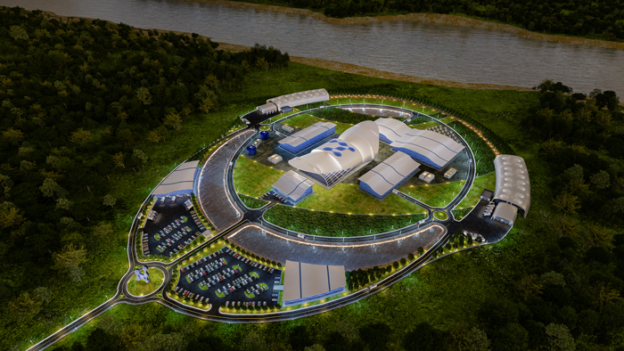Recent advancements in nuclear energy technology, particularly the development of small modular reactors, present countries like India with an opportunity to meet their energy needs while reducing carbon emissions. However, significant challenges remain, including high costs, regulatory hurdles, and public acceptance.
Since its inception, nuclear energy has been a subject of intense debate and rigorous research. Undeniably, nuclear power holds the potential to satisfy a significant portion of the global energy demand. However, the benefits of nuclear energy often get eclipsed by its challenges, including safety concerns, waste disposal issues, and substantial initial costs.
Despite these hurdles, recent advancements in nuclear technology, specifically the advent of small modular reactors (SMRs), are paving the way for a potential nuclear renaissance. This article explores the evolution of nuclear energy, the latest advancements in reactor technology, and their implications for India, a country with ambitious goals in the nuclear energy sector.
Fundamentals of nuclear power
Nuclear energy production hinges on nuclear fission, which involves disintegrating a heavy atom’s nucleus, such as uranium or plutonium, into two or more smaller nuclei. This process releases a substantial amount of energy, which is harnessed and converted into steam to power a turbine that generates electricity.
The first generation of nuclear power plants, built in the 1950s and 1960s, were experimental in design. In contrast, the commercially viable second-generation designs incorporated enhanced safety measures from the 1970s to the early 2000s. Further breakthroughs have led to the third generation of reactors, which are more efficient and safer, with many currently in operation.
The emergence of small modular reactors
The latest development in nuclear technology is the creation of Small Modular Reactors (SMRs). These reactors, with a capacity of less than 300 MWe, are significantly smaller than traditional reactors, which typically have a capacity of 1000 MWe.
SMRs offer several advantages over conventional reactors. Their compact size allows for factory construction and subsequent transportation to the desired location, significantly reducing construction time and costs. Their modular design enables scalable implementation in areas where larger reactors are impractical. However, SMRs face challenges, including higher costs per unit of electricity production due to the absence of economies of scale, an underdeveloped regulatory framework, and public acceptance issues.
Nuclear power in India: Current scenario and future prospects
India’s nuclear power program, established over decades, is robust. As of February 2023, India operated 22 nuclear reactors across eight sites, with a total capacity of 6,780 MW. This substantial increase in nuclear power capacity is crucial to India’s strategy to meet its burgeoning electricity demand.
In addition to addressing energy needs, India’s nuclear power program aims to reduce the country’s carbon dioxide emissions. As a significant contributor to global greenhouse gas emissions, India acknowledges the necessity of transitioning to cleaner energy sources, with nuclear power playing a pivotal role.
Despite the challenges, India remains dedicated to expanding its nuclear power program, focusing on SMRs. The deployment of SMRs in India could revolutionize the country’s nuclear power industry, but it will require substantial investment and collaboration among governments, industry, and the public. Additionally, India’s regulatory framework will need to adapt to accommodate the unique attributes of SMRs.
India’s nuclear power strategy has historically focused on thorium-based reactors due to the country’s vast thorium reserves. However, most of India’s nuclear electricity comes from uranium-powered reactors, with the development of thorium reactors progressing slowly.
Implementing SMRs in India could dramatically transform the country’s nuclear power industry. Given India’s vast geographical area and the lack of infrastructure in many regions to support larger reactors, SMRs are an attractive option with their modular design and smaller size.
However, implementing SMRs in India will depend on several factors, including the high cost of SMRs and the need for an updated regulatory framework.
Conclusion
C
Recent advancements in nuclear energy technology, particularly the development of SMRs, present countries like India with an opportunity to meet their energy needs while reducing carbon emissions. However, significant challenges remain, including high costs, regulatory hurdles, and public acceptance. Overcoming these challenges will require concerted efforts from governments, industry, and the public. It is highly plausible that nuclear power, especially advanced reactor technologies like SMRs, will play a crucial role in addressing the pressing global need for a transition to low-carbon energy sources.
The author is a nuclear field expert with extensive academic and research experience. Currently as an Associate Professor at Woxsen University, he also holds the Dean-School of Sciences.
https://www.financialexpress.com/business/defence-nuclear-energy-a-focus-on-small-modular-reactors-and-implications-for-india-3196850/





